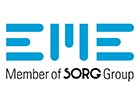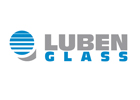AGC Glass Europe is constantly working to reduce the environmental impact of its production processes to ensure a sustainable future. Under its Roadmap to Carbon Neutrality, the Group has now announced that by the end of 2022 it will produce a float glass range featuring a significantly reduced carbon footprint of less than 7 kg of CO2 per m2 for clear glass (4 mm thick).
This move will enable AGC – one of the world's largest flat glass producers – to reduce the carbon emissions generated during the production of this float glass by more than 40%(1).
To achieve CO2-neutral glass production by 2050, all parts of the value chain need to be taken into consideration. This includes decarbonising the glass production processes as well as eliminating all CO2 emissions from the supply chain upstream of our processes and other indirect emissions. Having addressed all emissions in the value chain, AGC can now announce the first steps on its path towards carbon neutrality: the company will launch a new float glass range with a reduced carbon footprint by the end of 2022.
Production of low-carbon glass: a holistic approach
AGC is taking a holistic approach to sustainably producing low-carbon glass:
Sustainable sourcing of raw materials
Use of highly efficient melting furnaces
Increased use of cullet (recycled glass)
Use of green energy sources
Optimisation of transport between Group sites for finishing processes
Optimisation of transport for finished products
Applying the holistic approach to the first low-carbon production run at Moustier
AGC Glass Europe’s production plant in Moustier, Belgium, will be the first AGC plant to produce low-carbon glass, as it has already been successfully converted to meet the strict conditions required. The Moustier plant is centrally located for sourcing sustainable raw materials and strategically situated for optimal delivery to customers.
1. Sustainable sourcing of raw materials
Moustier – the first float glass production facility established in continental Europe – benefits among other things from the local availability of very pure sand that requires minimal treatment before its use in float glass production. For several years now, 75% of its raw materials – not just sand, but also other raw materials – have been transported by barge to the plant located along the river the Sambre to be unloaded on-site.
Soda ash is a key raw material in glass production since it reduces the melting temperature of sand, the main ingredient. The carbon footprint of soda ash varies significantly depending on the process used for its production. The Moustier plant will base its low-carbon glass production on soda ash that has a reduced carbon footprint.
2. Use of highly efficient melting furnaces
One of the furnaces in Moustier is already benefiting from a recent cold repair (melting furnaces are completely overhauled every 15 to 18 years), incorporating new technologies, such as electro-boosting, that use electricity to melt the sand, to reduce dependence on imported natural gas. This innovative production process is a big step in the company’s overall roadmap to carbon neutrality.
3. Increased use of cullet (recycled glass)
The Moustier plant – located in an area with numerous processors, long-standing customers and Group subsidiaries – has been increasing the cullet content used in the glass production process for many years now by leveraging multiple recycling streams. For this new float glass with a reduced carbon footprint, new cullet streams will significantly boost the amount of recycled glass to more than 50% (2).
4. Use of green energy sources
AGC will maximise on-site renewable electricity generation. In its home country of Belgium, all roofs on production plants and offices feature building-integrated photovoltaics, slashing the company’s carbon footprint. In addition, the company even has its own wind turbine running at its Seneffe plant, just a few kilometres from Moustier. On the Moustier site, additional renewable electricity will be supplied from on- and off-site power projects (including combined heat and power (CHP) generation and solar panels).
5. Optimisation of transport between Group sites for finishing processes
Logistics are also part of AGC's holistic strategy. In order to enhance synergies as much as possible between production and the finishing process and to reduce transport and CO2 emissions, AGC laminates the glass sheets into safety glass at the Moustier plant itself, while coatings are applied at the coating plant in Lodelinsart, just 25 km away.
6. Optimisation of transport for finished products
Due to the Moustier plant’s strategic location, transport distances for end products are optimal. The surrounding areas of northern France, the Benelux countries and western Germany are densely populated, with many millions of customers less than 250 km away.
Low-carbon glass range offers multiple processing options
By the end of 2022, the Group will launch its new range of low-carbon float glass products based on clear float glass whose carbon footprint has been slashed by more than 40% (compared to the AGC Glass Europe baseline): less than 7 kg of CO2 per m2 for clear glass (4 mm thick).
This low-carbon float glass will be processed into AGC’s key ranges of functional glazing products:
safety glass: Stratobel and Stratophone range
thermal insulation glass: iplus range
solar control glass: Stopray, ipasol and Energy ranges
These new low-carbon glass products will deliver the same aesthetics, quality and technical performance as traditional AGC float glass products.
AGC then plans to leverage the experience gained at its Moustier plant and will gradually transfer its low-carbon strategy to other sites, starting with the Seingbouse plant in France in early 2023.
Davide Cappellino, President of Architectural Glass Europe & Americas Company, concludes, “Our first low-carbon glass range is a key milestone in AGC’s carbon reduction roadmap. We are happy to offer our customers a glass which, from the extraction of raw materials to final installation, generates around 40% less CO2 than our standard glass. This is a major reduction and a big step towards carbon neutrality in the construction sector.”


























